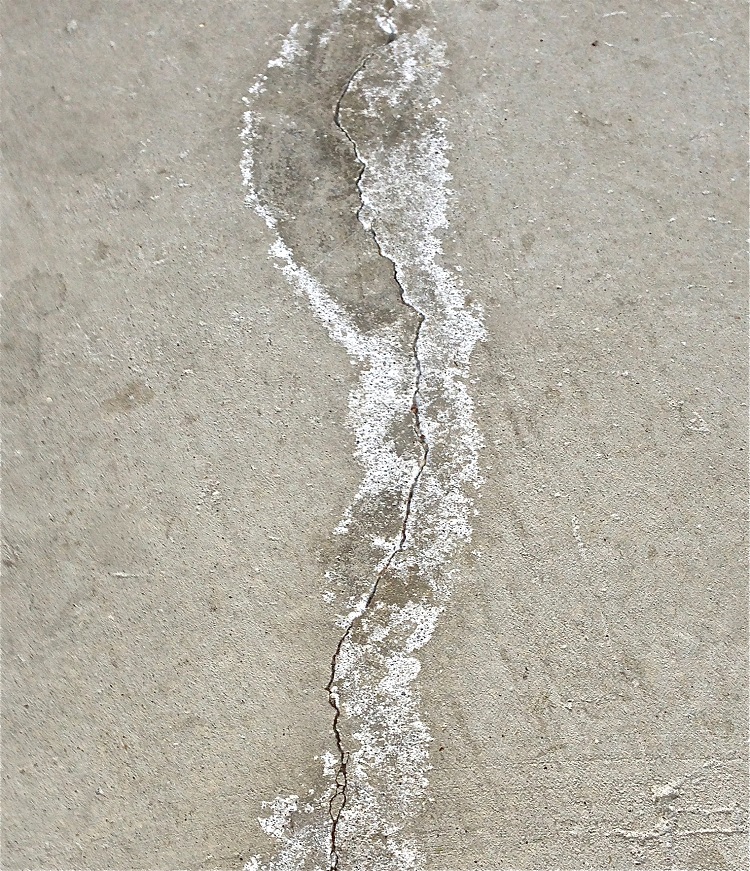Concrete bonding with impermeable coatings requires special attention to avert failure. As far as steel substrates protective coating is concerned, there are set guidelines in place to assure good adhesion throughout service life.
Elaborate standards for steel surface preparation and cleanliness have been put in place to ensure coating adhesion and performance is predictable.
When it comes to concrete surfaces, nevertheless, every slab possesses its own chemistry and performance profile. The variance in concrete formula, subsoil conditions, placement, curing and finishing; makes predictability of coating adhesion very tricky.
A large percentage of coating failures on concrete are caused by excess moisture in or below the concrete slab.
Given the importance criterion of moisture in concrete during the application of floor surfacings, it is not the main cause of concrete bond failure months later. The failure can be attributed to moisture vapor transmission; that is, the flow of moisture or moisture vapor.
Most epoxy adhesives can maintain their bond strength to a concrete slab with relatively high moisture content. There have been some cases of bond failures on above grade slabs, but almost all are as a result of moisture vapor transmission rather than moisture content.
The main area of interest is concrete slabs-on-grade and how to dry out and minimize the vapor transmission
Measuring Moisture Transmission
Therefore, understanding the difference between moisture vapor transmission and moisture content is very important. The slab may have low moisture content and still experience concrete bond failure failure at some point in the future as a result of vapor transmission through the slab.
Usually, high moisture content in the slab may be harmless unless the available conditions trigger the movement of that moisture to the surface. In that case, the problem arises from moisture transmission to the surface regardless of whether it is from high moisture content in the slab or under the slab.
The moisture vapor will only migrate to the surface when the vapor pressure in the concrete is higher than in the air above the surface. In most cases, moisture vapor transmission testing on new buildings is done before enclosing the building, to permit the flooring contractor to proceed.
The conditions above the slab at this particular time are the same compared to to the slab itself, hence there is little moisture attraction to the surface and the test reads dry. After enclosing the building, the air conditioning lowers the humidity and the temperature which in turn lowers the vapor pressure leading to a gradient and creating a vapor drive in the process.
Controlling Moisture Transmission
Moisture vapor transmission can be best controlled right at the beginning, from the sub-soil to the concrete placement. An effective and efficient vapor barrier has to be used when installing slabs-ongrades that are to accommodate an impermeable adhesive or surfacing.
Adhesion problems caused by moisture vapor transmission are not exclusive to epoxy or epoxy adhesion to concrete. Any non-breathing film like rubber, tile and sheet will react quite similarly.
The manner of placement of a vapor barrier when installing slabs is quite important. It appears the primary reason of installing a granular fill over a vapor barrier is to minimize plastic shrinkage, cracking and to act as a bleed-water blotter.
If installed in this manner, it requires a much longer time than thirty days, in some cases a year; to dry up well enough for an impermeable coating to be used on the surface. When utilizing an effective vapor barrier to control moisture vapor transmission, it should be well placed directly under the slab, and more efficient than six-mil poly; which is easily punctured during concrete placement.
Once the best vapor barrier has been chosen, a good quality concrete and good placement techniques are important. A low water to cement ratio, designed for high compressive strength and low permeability, is very important.
The configuration and structural integrity of the slab must be considered and control joints and expansion must be designed. A well placed and properly cured concrete slab will provide a hard, dense concrete surface of low permeability.
Moisture vapor transmission through the slab is the problem of moisture in and under a concrete slab-on-grade. The flow of moisture vapor to the surface is the normal flow from a point of higher vapor pressure to a point of lower vapor pressure to create equilibrium.
By controlling or lessening the rate of moisture vapor transmission in slabs-on-grade, impermeable systems can successfully be used on these surfaces and avoid concrete bond failure.


